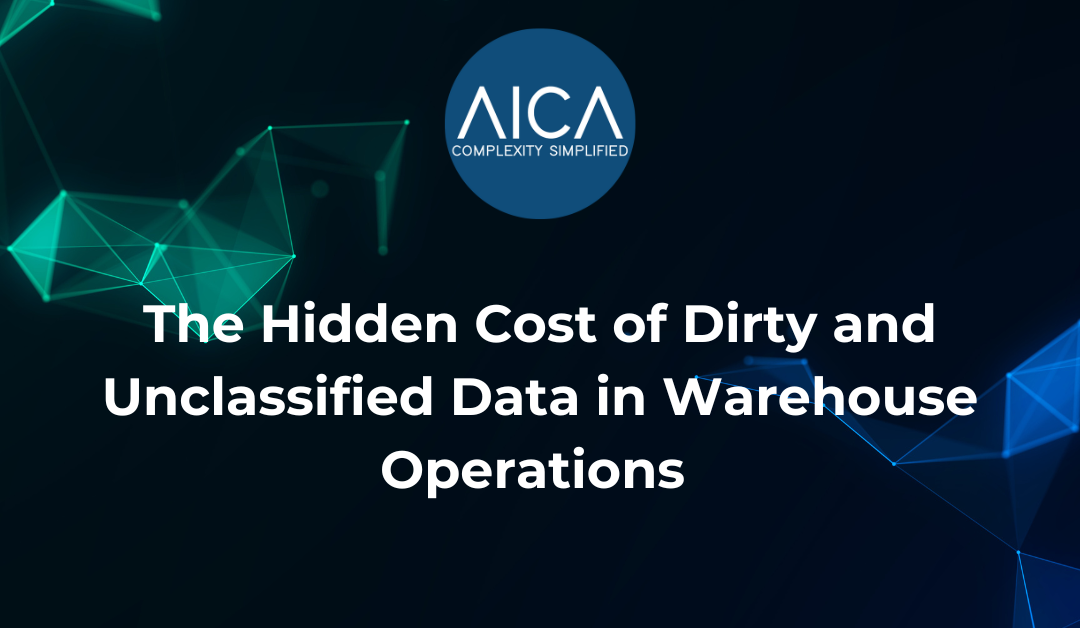Warehouse inefficiencies are often blamed on outdated systems, poor layout, or staffing shortages. But one of the most overlooked and most damaging causes is the quality of the data behind the operation.
Dirty, duplicate, and unclassified product data silently creates chaos across warehouse workflows. From excess inventory and misplaced stock to delayed picking and poor procurement decisions, bad data is a root cause that most organisations don’t see until it’s already costing them time and money.
The Real Impact of Dirty Data on the Warehouse Floor
Warehouses rely on accurate, structured data to function efficiently. Every bin, pallet, and location is tied to an item, and that item depends on clean metadata: dimensions, weight, part numbers, categories, and more.
When that data is wrong, incomplete, or unclassified, the entire operation suffers.
Common issues include:
- Duplicate SKUs for the same item
- Missing size or packaging details
- Unstructured naming conventions
- No UNSPSC or product categorisation
- Obsolete or unverified supplier info
These data problems lead to real-world operational consequences.
How Dirty Data Causes Warehouse Inefficiencies
1. Overstocking and Excess Inventory
Without accurate classification or product grouping, the same item might be entered into the system multiple times under different names. This leads to unnecessary purchases, excess inventory, and inflated carrying costs.
2. Picking and Packing Errors
When product descriptions are vague or incomplete, warehouse staff spend more time identifying the right item, or worse, pick the wrong one. This slows fulfilment and increases error rates.
3. Wasted Storage Space
Missing size, weight, or packaging data leads to inefficient slotting and space utilisation. Warehouses can’t optimise layouts or automate storage allocation without complete item attributes.
4. Inaccurate Reordering and Stockouts
Reorder points and procurement logic rely on clear item classification. Without it, purchasing teams make decisions based on fragmented data, leading to shortages, delays, or emergency orders.
5. Failed Automation Initiatives
WMS, ERP, and automated picking systems depend on structured data to function. Dirty data breaks integrations, misguides automation, and stalls digital transformation efforts across warehouse operations.
Why Classification Matters
A lack of classification, particularly with taxonomies like UNSPSC, means you can’t segment, group, or analyse your inventory. This makes it impossible to:
- Consolidate items for bulk purchasing
- Identify slow- or fast-moving SKUs
- Run a meaningful ABC analysis
- Align procurement and logistics strategies
Warehouses with unclassified data rely on manual workarounds and tribal knowledge instead of system-driven intelligence. That’s not scalable.
How AICA Helps Clean and Classify Warehouse Data at Scale
At AICA, we help warehouse and supply chain teams tackle dirty and unclassified data with precision. Our Agentic AI is purpose-built to cleanse, enrich, and classify product and service data with over 90% accuracy, without the time and cost of manual cleanup.
Our platform enables:
- Identification and removal of duplicate items
- Enrichment of missing size, weight, material, and packaging attributes
- Classification of SKUs using UNSPSC, GS1 GPC, or custom taxonomies
- Structured, consistent data ready for WMS, ERP, and inventory systems
The result? Warehouses run leaner, smarter, and faster, powered by clean, intelligent data.
Conclusion
Dirty and unclassified data is one of the biggest hidden costs in warehouse operations. It inflates inventory, slows fulfilment, blocks automation, and undermines decision-making.
Fixing it doesn’t require new systems; it requires better data.
At AICA, we give your warehouse the structured product data it needs to operate efficiently. Visit our website to learn how we cleanse, enrich, and classify warehouse data at scale.
Copyright Reserved © AICA Data International Ltd 2025

